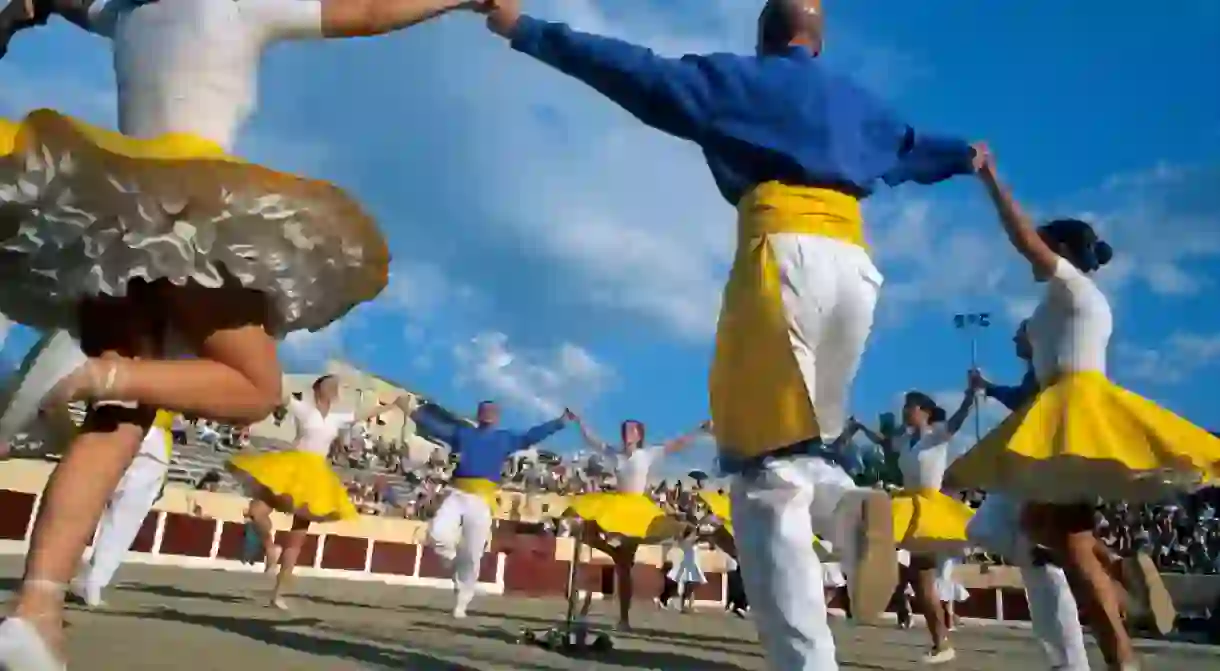Everything You Need To Know About The Catalan Sardana

One thing you can’t help noticing in Catalunya is the importance of local folklore and customs, which continue to play a significant part in the life of the local community. The sardana – a type of ancient folkloric dance – is an integral part of the regional culture and is a popular feature at most celebrations throughout the Catalan cultural calendar.
What is the sardana?
The sardana is a type of ancient folkloric dance which is usually performed at popular celebrations and is, in fact, considered the national dance of Catalunya. The dancers, or sardanistas, gather in a circle, alternating men and women – when partners dance together the woman usually stands to the right of her male partner – and hold hands throughout the dance, which is composed of an introduction and then a series of different movements.

When is it performed?
The dance is normally performed to the sound of a live music band known as a cobla, which plays a specific set of musical sections called curts (shorts) and llargs (longs). The band typically consists of 11 band members playing mostly wind instruments – a type of flute known as a flabiol as well as two types of oboe called tenora and tible – along with a small drum called tamborí and a double bass.
Given that it is a popular dance, sardanas performed at public gatherings are usually open to passers-by, who can join the formation, being careful not to separate a male and female partnership. The dance does not require any great physical strength and therefore it’s not uncommon to see people of all ages taking part in the fun.
The sardana then and now…
The precise origin of the sardana is a mystery and although the earliest written record of the dance dates back to the 16th century, many believe it is a much more ancient dance, with roots back in Antiquity. The circular structure of the dance and the holding of hands in that way are potentially indicative of the dance sharing origins with early dances from the time of Ancient Greece.
Current form and popularity
In its current form, the dance is known to have been popular in the regions of the Empordà, Garrotxa and Rosselló to the north of Catalunya, however other similar circular dances are found in Galicia, Asturias, Provença and Portugal. By the 16th century it was popular for the sardana to be performed in the courtyards of the royal families and nobility, but eventually lost some of its original popularity owing to the changes in musical fashion.

Symbol of resistance
However, during the period of time known as the Catalan Renaissance – a time of renewed Catalan nationalism in the arts that took place in the 19th century – the sardana saw a comeback, as those associated with the movement came to consider it an integral part of Catalunya’s distinct cultural identity.
Since then the dance has remained a regular feature of public celebrations, dances and festivities across the region, with many communities having their own, albeit mostly amateur, cobla bands. When visiting Barcelona, the Catalan capital, be sure to check out the calendar of local celebrations on the local council’s website, as there are frequent performances open to the public which take place in the square in front of the Cathedral.
Did you know – Culture Trip now does bookable, small-group trips? Pick from authentic, immersive Epic Trips, compact and action-packed Mini Trips and sparkling, expansive Sailing Trips.













